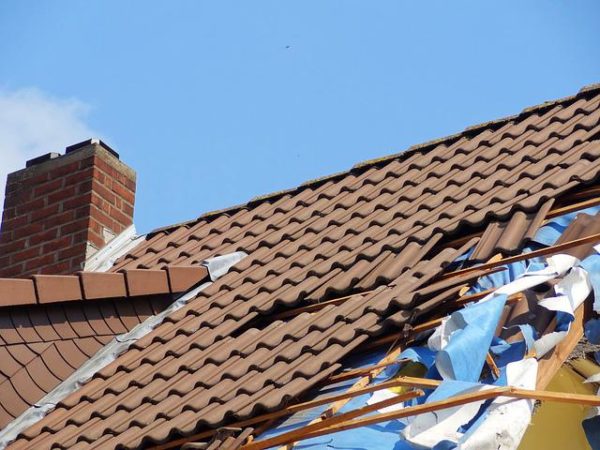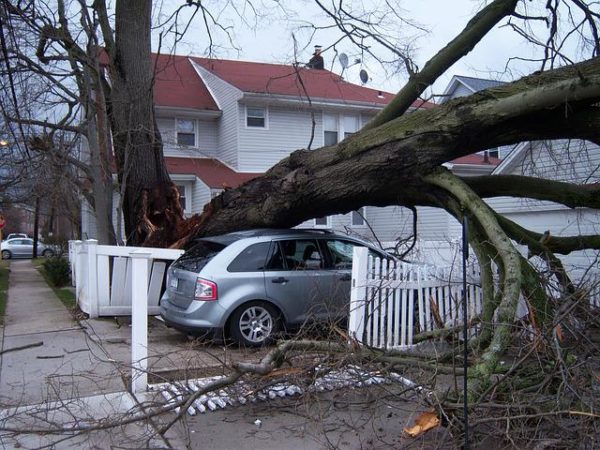You can take steps to protect your home from the weather, but you might still find that you have to deal with damage after a storm. Even if you protect your home, you can’t completely prevent anything from happening. You might have some cleanup to do or perhaps some repairs to make, so it’s a good idea to get started as soon as it’s safe to do so. Once you’re sure the storm has passed and it’s safe to be outside, you can inspect your home and start straightening things out again. Here are some of the first things you should do to set your home to rights.
Check the Roof
After a big storm, it’s important to take care of any damage that may have been done to your home. This includes repairing any roof leaks that may have arisen. A small leak can turn into a big problem if it’s not fixed quickly, so make sure you take care of this issue as soon as possible. Here are some tips on how to repair Roof Leaks:
-First, you’ll need to identify the source of the leak. This can be tricky, especially if the leak is small. Once you’ve found the source, make sure to repair any damage that has been done.
-Next, you’ll need to patch the hole or crack that is causing the leak. You can do this by using a piece of tar paper or flashing. Make sure the patch is secure and waterproof before moving on.
The roof is one of the top priorities to check for damage after a storm. You might notice missing or broken shingles, or perhaps debris was blown onto the roof. If you think that water might be getting into your home, and you can’t find the leak, you need to contact a service for roof leak repair as soon as possible. Even a small leak can end up costing you a lot of money in the long run with future foundation and structural issues due to water damage.

Examine the Guttering
The guttering system is another common thing to sustain damage during a storm. Plastic guttering especially can be vulnerable to damage and might need to be repaired or replaced. Take a look around the perimeter of your home to see if you can spot any cracks, loose pieces, or even missing pieces of guttering. You should get these problems fixed quickly to help protect your home. The gutters are essential for directing rainwater away from your property. Check to see if any debris might have been blown into the gutters too, including loose bits of tile that might have come off the roof.
Inspect the Exterior Walls
Take a good look at the exterior walls of your home after a storm. There’s a chance that there might be cracks or broken pieces in your bricks and mortar, or whatever finish you have on your home. You can also take the chance to inspect your windows and doors, especially as there is a risk that your windows could have been cracked or smashed by flying debris or high winds. If your home has siding, look for any loose boards that might need to be repaired or fixed back into place.
Straighten Out Your Yard/Garden
While you’re outside, you can take the chance to straighten out your outdoor space. You might notice some things have been blown around, especially if you forgot to tie things down or tidy up before the storm arrived. If you’ve been unlucky, you might discover a plant has been ripped out or a pot has been blown over. You can spend some time straightening things out and tidying up so that your yard or garden looks neat again. If something got knocked over that you didn’t expect to move, it might be a good idea to consider tying it down or moving it for next time.

Check Trees
If you have any trees outside, it’s smart to check them after a storm. Any damaged branches could come down at any time and could hit your home (or someone else’s) or cause an injury to someone. Trees that have fallen down completely should also be removed quickly so that they don’t cause any further problems. If you need to cut down a tree or remove some branches, it’s best to leave the job to a professional who can do it safely.
Address Flooding
Flooding and standing water can sometimes occur during and after a storm. If this has happened either indoors or outdoors, you need to deal with it quickly. In some cases, you may just have to wait for the water to drain away and dry up. However, it might also be possible to give it a helping hand, especially if it will be difficult for it to drain away on its own. You can use a pump to remove flood water or you might be able to encourage it to drain downhill if it’s in the right position.
Look Inside Your Home
As well as inspecting the exterior of your home, you should look inside too. Even if you can’t see any signs of problems outside, there might be something inside that indicates that there is a problem. Look for things like leaks and signs of water damage, as well as new drafts that you might be able to feel. Check your attic or roof space especially, as well as around windows and doors. These issues might indicate an issue with your roof or perhaps a problem with a window frame or door frame.
Collect Evidence
If you have a problem that you think needs to be reported to your insurance provider, make sure you have evidence to show them. Take photos of the problem and try to make sure they clearly show what the issue is. You could also take some notes of any damage so you have a written record and can clearly explain the problem. If you have any damaged items, it’s a good idea to keep them instead of throwing them away, at least until you have dealt with everything that you need to.
Contact Your Insurance If Necessary
Get in touch with your insurance provider to make a claim if you need to. You can often do this online, but you can also call them and speak to someone if you prefer. Before filing a claim, it’s a good idea to check your insurance policy to see what it covers. It’s best to be sure before you waste your time claiming for something that isn’t a valid claim. If you can’t make sense of your policy documents, get in touch with your provider to ask them any questions that you have.
Take a good look at your home after a storm to look out for any damage and straighten things out.





